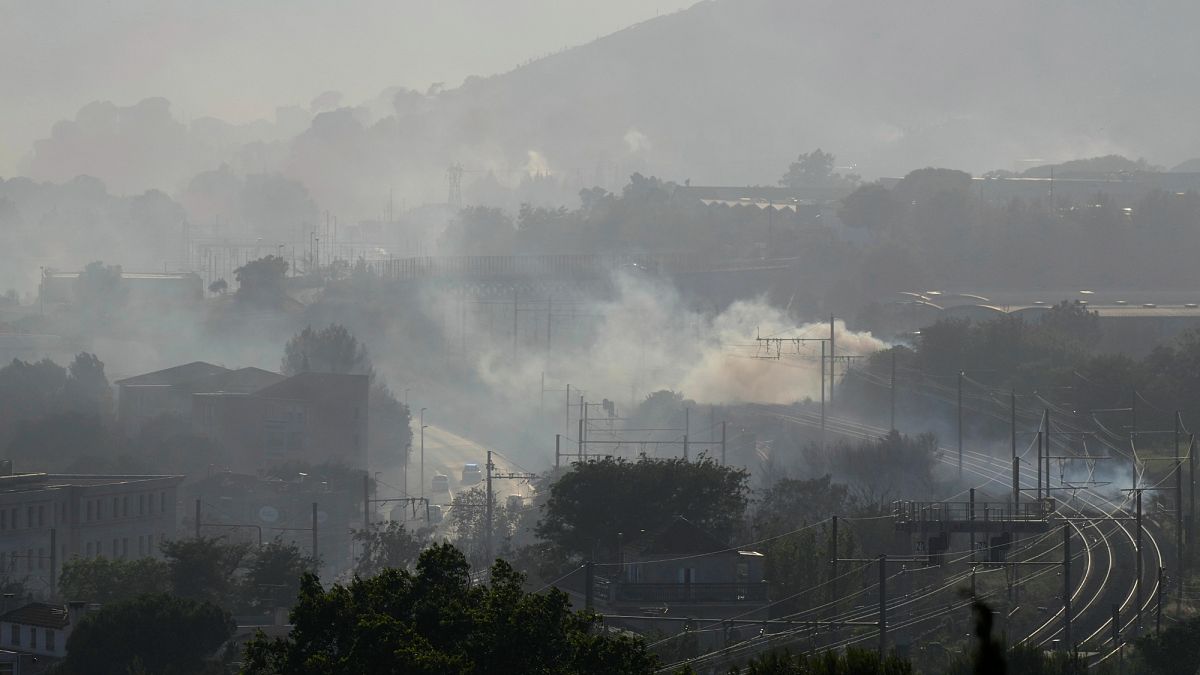Everybody loves a par-ayyy-de.
An Italian Brooklyn tradition for over a century, Williamsburg’s Our Lady of Mount Carmel Feast draws hundreds of thousands to an annual bacchanal of sausage, peppers and spectacle, courtesy of the festival’s main character — the Giglio, a 4-ton, 72-foot statue “danced” through sweltering streets by a team of 120 men known as “lifters.”
“Few places on Earth still have anything like this — people come from all over to see it, and we’re getting bigger and bigger every year,” Monsignor Jamie Gigantiello, a longtime organizer of the high-in-the-sky happening, told The Post of the event — which kicks off Wednesday, July 9, for its 138th edition.
The dancing of the colossal Giglio, taking place several times over the course of the festival, began in Williamsburg in 1887 — continuing a 1,500-year-old tradition brought to America by Italian immigrants from Nola in Campania that honors St. Paulinus.
As legend has it, aside from renouncing his riches, Paulinus once exchanged places with a young prisoner in the 1st century — and the masses have been going to great lengths to honor him since, often flaunting his trademark lilies. [Giglio — pronounced jeel-e-o — is the Italian word for lily.]
Paying tribute to a saint isn’t all fun and galamad, however.
“By the time the day is over, you’re just dead — your body is just exhausted,” fifth-generation “lifter” Joey Aragona, 32, told The Post of the heavy task of carrying the statue around in sometimes punishing July heat.
‘It’s both a joy and a penance’
Not that there’s anything wrong with that, he hastened to add — calling the procession “a very proud thing to be a part of.”
Aragona has been on the team since childhood — continuing a tradition started by his great-great-grandfather.
“I started lifting the kid’s Giglio when I was 4 years old,” he said, referencing a much smaller tower created for the young participants — who then work up the ranks to become festival “capos” and “lieutenants” as adults.
As a band plays, lifting the tower is a huge honor — and a major challenge.
“Basically, it’s both a joy and a penance,” said Pat Fevola, who has been a “lifter” since 1976. He’s so devoted to the tradition, he got inked with a tattoo of the Giglio on his left forearm.
“All of the lifters become family,” he told The Post of the intense experience, which includes devotional Masses. “That’s why we call it Christmas in July.”
Formerly made of wood, the Giglio has been composed of aluminum since 1966. It takes about 300 hours to build a new one each year. Construction typically begins in October.
The Gig gig is big
The feast proudly marches on, despite recent seismic shifts in the neighborhood’s longtime Italian influence.
Last year, nearby Frost restaurant (open since 1959) shuttered. Just last month, Napoli Bakery (founded in 1981) also closed its doors — both part of a citywide trend of beloved Italian-American businesses leaving NYC.
“There was a time there when interest in the feast was winding down,” said Gigantiello of the effects of gentrification on the neighborhood.
Now, however, thanks to social media, he explained, the event is drawing “record-breaking crowds” — with an average attendance of about 100,000 per year.
That makes it the second-largest Italian feast in New York — behind Little Italy’s long-running Feast of San Gennaro, which pulls in 1 million or more visitors at a pop.
“It used to be that we put up posters and sent out mailers to addresses of the parishioners to invite people,” Gigantiello said. “Today, people from all over are hearing about it online and want to come and see what it’s like.
“I always say I’ll get in trouble, but I think we’re the best one because it’s still a neighborhood feast,” he boasted.
East Harlem also has a Giglio event. Founded in 1908, that one is in August, albeit over a single weekend
Over in Massapequa, they’re also preparing for a much smaller Giglio feast at the end of July.
The Williamsburg festival even serves as a homecoming for the neighborhood’s former residents.
“The tradition has lasted so long … due to it being the central point of our Italian community for over a century,” festival lieutenant John Perrone told The Post.
“Many of us return from other areas — Queens, Long Island, New Jersey — to continue the tradition on our native streets,” he said.
Aside from the people, even the streets that line the festival have transformed over time. Gone are the quaint two-story homes, with luxe apartment towers popping up in their place.
“It has become much more challenging with all of the new construction, with new people moving into the neighborhood who don’t like the noise and the interruption in front of their door,” Gigantiello said.
Aside from the crowds and music, the festival also features carnival games and rides.
“But we try to be good neighbors. Rather than fighting with them, we try to engage with them,” Gigantiello said.
“When a building goes up, I’ll talk to developers and landlords and explain to them we’ve been doing this for 100 years.”
Said Fevola: “People might complain, but it’s like moving next to a firehouse and you get mad when the sirens go off at night.”
Ciao down
Longtime feast vendors who have been serving the festival for generations include Dee Best Zeppole, which have been fried and doused with powdered sugar by the local Donatelli family since 1923.
There’s also Lucy’s Sausage and Peppers, another festival mainstay.
This year, entertainment will be provided by “America’s Got Talent” finalist Sal “The Voice” Valentinetti and Bruce Springsteen cover band Promised Land.
Parlaying its recent success and storied history, this year Gigantiello and his team published a book through the church reflecting on the tradition: “Mt. Carmel Brooklyn: The Heart and Soul of America’s Feast.”
Featuring a trove of archival photos, the volume will be available during the festival.
As for the event’s future, Gigantiello pledges: “The feast is secure as long as the parish is there.”












